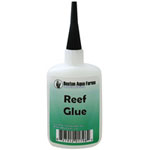Algae problems in the home aquarium are one of the most common issues hobbyists can face, and can seem very difficult to solve. Many people have given up on their aquariums because they could not stop the algae monster from taking over. This does not need to be case, aquariums should be a source of relaxation, not frustration. If you are fighting the algae monster in your aquarium, all you need to understand is what caused the problem, then the solution is not far away. The biggest mistake that is made while trying to eradicate algae from an aquarium is to treat the symptoms and ignore the cause. Using algaecides, scrubbing like crazy, leaving your lights off, and adding animals to eat algae will kill or remove algae in the short term, but history will repeat itself if you do nothing to address the source of the problem.
Algae need two things to thrive in an aquarium; Light and nutrients. To control unwanted algae growth you need to control both of these components to maintain an algae free aquarium.
Lighting is the easier of these two components to control. Duration and quality of light are crucial to controlling algae growth. Lights should never be left on 24hrs a day, try to create a natural day and night cycle in your aquarium. Freshwater live plant and saltwater live coral aquariums need a maximum of 10-12 hours per day to provide energy for photosynthesis, more basic aquariums require as little as 8 hours per day, any more light than this is unnecessary and can contribute to algae problems. Lighting duration is easily controlled with the use of aquarium timers. Lighting quality is a function of the type and age of the light bulbs being used. Whatever type of lighting is being used (fluorescent, metal halide, power compact) it is important that bulbs are replaced on a regular basis. The quality of your light degrades over time, shifting towards undesirable light spectrums that encourage algae growth. High output lights like metal halides and VHO fluorescents may need to be replaced as often as every six months to maintain optimal spectral output. Standard fluorescent, compact fluorescent and T-5 fluorescent bulbs should be replaced every 12-18 months depending on type and application. You should only use light bulbs that are designed for aquarium use, other types of light bulbs will produce unacceptable light spectrums.
Nutrients can be a more difficult problem to solve, and may require some investigation to determine the source. Nitrates, phosphates and silicates are the key nutrients to target when trying to control algae growth. These nutrients can be created in the aquarium from natural processes, or they may also be unknowingly added to the aquarium by the hobbyist. First let’s deal with the nutrients being created in the aquarium.
Nitrates are the end result of the biological filtration process in closed aquarium systems. Over time nitrate concentrations will rise in your aquarium, you should periodically test for nitrates in your aquarium using a nitrate test kit. Nitrate levels are best controlled by using nitrate removing filter media, like Seachem’s Denitrate and performing regular water changes to physically remove nitrate from the aquarium. Phosphates are produced in the aquarium by decomposing organic material, most commonly from uneaten food, decaying plants, and fish waste. And as with nitrates, phosphates will increase in concentration over time. Use a Phosphate test kit to monitor levels in the aquarium. Overstocking and overfeeding will quickly lead to elevated phosphate levels in an aquarium. Use phosphate removers in your aquariums filters, and perform water changes to physically remove phosphates from the water.
One of the most overlooked sources of nutrients in the aquarium is from your source water. Performing water changes or topping off for evaporation with tap water that has nitrates, phosphates or silicates will only compound the problem, and may make things worse. If you live in an area where there is a heavy agriculture industry phosphate levels can be extremely high from fertilizer use, and some municipal water sources can have high nitrates as a result of their filtration process. If you have tried the above steps without positive results, make sure that you test your tap water! Especially in live plant and live coral aquariums with intense lighting, make sure that your source water is as pure as possible.
There are many types of filter systems available for purifying your tap water. The most efficient type of filtration available is a reverse osmosis filter. Reverse Osmosis, or RO, will remove up to 95% of all impurities, and when coupled with a deionizer, will remove up to 99% of impurities (including nitrates, phosphates and silicates). If you know that the water you are putting into your aquarium is nutrient free, then you are one step closer to ridding yourself of troublesome algae problems.
Follow these guidelines and algae problems will be a thing of the past. Make sure that you are following proper husbandry guidelines with respect to stocking, cleaning and feeding habits, and test your water so that you are addressing problems at the source. You can control the algae monster!
 That Fish Blog – Aquarium Advice and Information
That Fish Blog – Aquarium Advice and Information




Thanks for the Great Article.